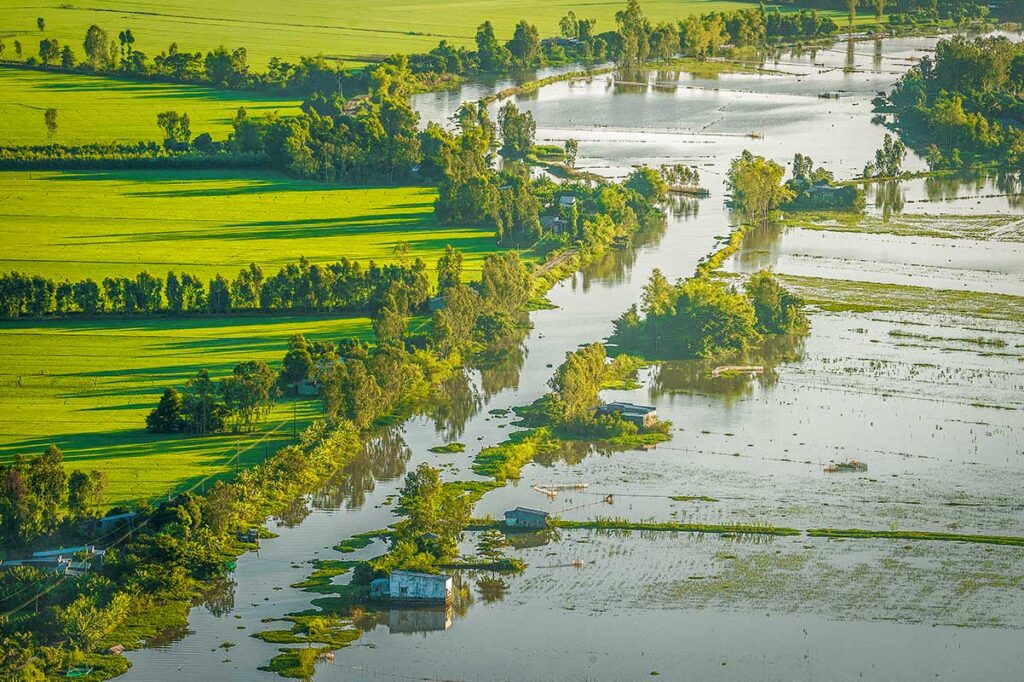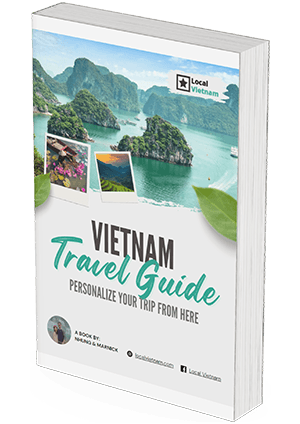About Kien Giang
Located in southern Vietnam, Kien Giang is one of the largest provinces in the Mekong Delta, encompassing both mainland and islands. Its capital, Rach Gia, serves as a gateway to the province, but most travelers are drawn to Phu Quoc, Vietnam’s largest and most famous island. This tropical paradise is a major highlight of Kien Giang, alongside its lesser-known islands and rural mainland areas.
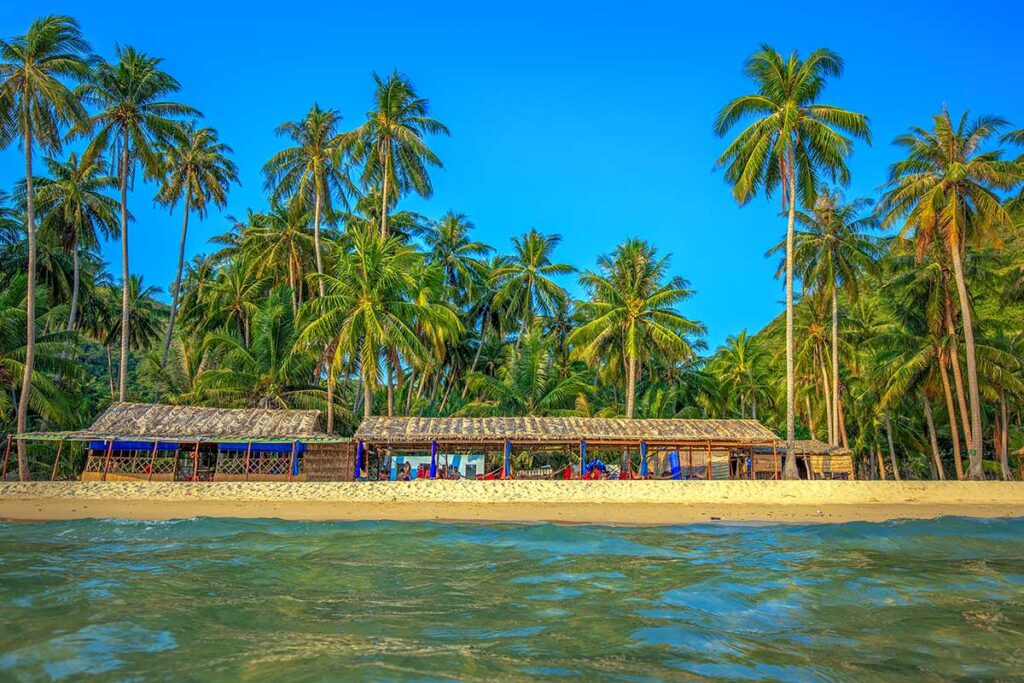
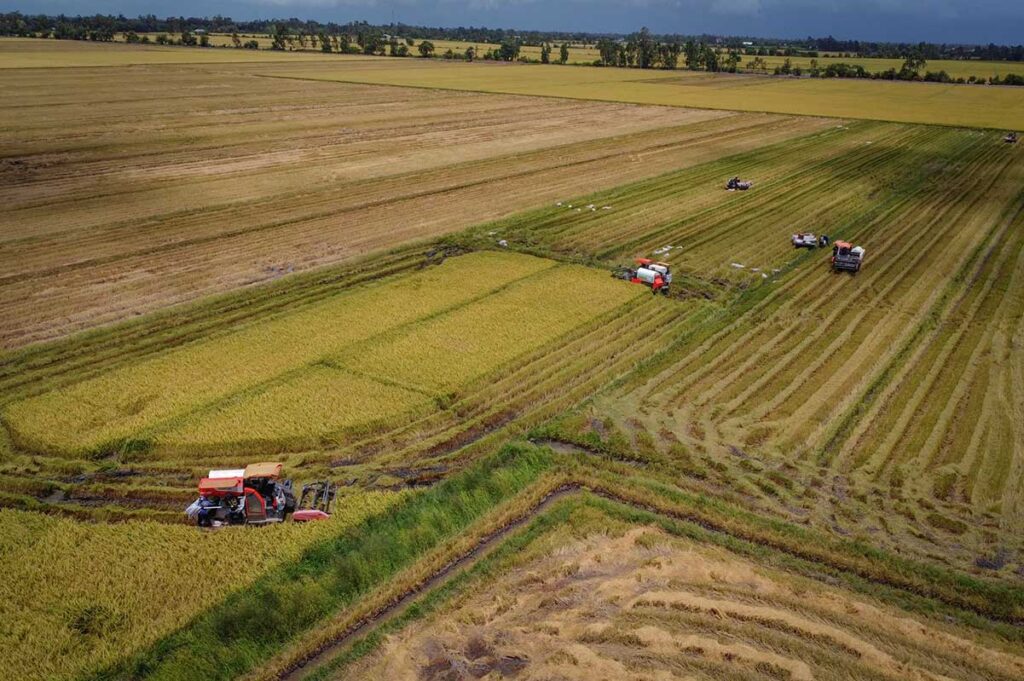
Historically, Kien Giang was once part of the Khmer Empire, and the region still retains cultural influences from its Khmer roots. Today, it is best known for its pristine beaches on Phu Quoc, its role as a gateway to southern Cambodia, and the inland areas of the Mekong Delta that offer opportunities for off-the-beaten-path exploration. From picturesque beaches to unique local traditions, there are plenty of things to do in Kien Giang for a variety of travelers.
Is Kien Giang worth to visit?
Phu Quoc, despite parts of it being overdeveloped, remains one of Vietnam’s premier beach destinations with stunning coastal areas and clear waters. The mainland also offers opportunities for exploration, although it is less developed and doesn’t have the iconic canal systems found in other parts of the Mekong Delta. Kien Giang is not the most typical Mekong Delta destination, but it can complement a broader itinerary for those seeking a mix of popular and lesser-visited attractions.
Best time to visit Kien Giang
Kien Giang is located in southern Vietnam, sharing the same weather patterns with other destinations in the Mekong Delta and Ho Chi Minh City. The province experiences a tropical climate with distinct dry and rainy seasons.
The best time to visit Kien Giang is during the dry season, from November to April, when sunny skies and mild weather make it ideal for enjoying the beaches of Phu Quoc and exploring the mainland. The rainy season, from May to October, sees frequent downpours and higher humidity, which can make outdoor activities more challenging, although the landscape becomes lush and vibrant during this time.
How to travel to Kien Giang
Traveling to Kien Giang depends on your destination—whether you’re heading to the mainland or the islands like Phu Quoc. Each location has distinct transportation options to consider.
Rach Gia
Rach Gia is the provincial capital and an important gateway to the islands of Kien Giang province. While not a major tourist destination itself, it is one of the departure points for ferries to Phu Quoc, as well as the only gateway to lesser-known islands like Nam Du and Hon Son. However, for reaching Phu Quoc, Ha Tien is a closer and quicker option.
Flights
Rach Gia Airport offers limited flights, with only a direct connection to Ho Chi Minh City. Despite its limited options, flying is a convenient way to avoid a 5-hour road journey, reducing travel time to under an hour.
Bus connections
Sleeper buses remain the most popular way to reach Rach Gia from Ho Chi Minh City, with travel times ranging from 5 to 6 hours. For added comfort, consider VIP limousine sleeper buses, which provide more privacy and space compared to standard options.
Ha tien
Located in the southwestern corner of Vietnam, Ha Tien is a key gateway to Phu Quoc and a popular border crossing to Cambodia. While the town itself may not be a major draw, its strategic location makes it a vital stop for travelers heading to Phu Quoc or Kep, Kampot, and Sihanoukville in Cambodia.
Bus connection
Buses from Ho Chi Minh City to Ha Tien are plentiful, taking over 7 hours. Many travelers prefer sleeper buses to save daytime hours. On arrival, minibuses are available to take you to the ferry terminal or the border, but pre-arranging transportation is advised.
Private car
Hiring a car with a driver is a flexible option, particularly if you’re traveling from less accessible parts of the Mekong Delta. It allows for sightseeing stops along the way, with a fixed price for the journey rather than a metered fare.
Phu Quoc
Phu Quoc, Vietnam’s largest and most popular island, is a tropical destination with modern facilities and diverse transport options.
Flights
Phu Quoc International Airport offers domestic connections to major cities like Ho Chi Minh City, Hanoi, Da Nang, Can Tho, and Hai Phong. International flights connect to destinations in South Korea, China, Thailand, Malaysia, and Central Asia, making it the fastest way to reach the island.
Ferry connections
Phu Quoc is accessible by ferry from Ha Tien and Rach Gia, with Ha Tien being the closer and quicker option. Speed ferries are recommended for the best travel times.
Tip: You can combine your Mekong Delta experience with a seamless transition to Phu Quoc. Spend two nights in the Mekong Delta, exploring floating markets, cycling tours, and boat rides, before boarding a ferry to the island.
Other islands
Kien Giang includes several less-visited islands beyond Phu Quoc. While small uninhabited islands near Phu Quoc are popular for snorkeling and boat trips, others like Nam Du and Hon Son offer accommodation and opportunities for exploration.
Key Tip: Rach Gia is the primary hub for ferries to these lesser-known islands, as most ferries to Nam Du and Hon Son depart from here rather than Phu Quoc. If you plan to visit, start your journey in Rach Gia.
Destinations & Highlights in Kien Giang
Kien Giang is a province filled with diverse attractions, from the idyllic beaches of Phu Quoc Island to the coastal charm of Ha Tien and its surrounding islands. This list focuses on the most popular destinations and highlights in Kien Giang, providing insights into what makes each area unique. Whether you’re drawn to pristine beaches, cultural landmarks, or off-the-beaten-path experiences, there’s something for every traveler in this region.
1. Phu Quoc Island
Phu Quoc is Vietnam’s largest island and one of its premier beach destinations, renowned for its luxury resorts, boutique accommodations, and pristine sandy shores. Beyond the beaches, the island offers a rich mix of cultural landmarks, vibrant markets, and adventurous activities. Such a big and popular destination deserves its own detailed guide, so check out the full travel guide of Phu Quoc for more information.
Relaxing on its beaches
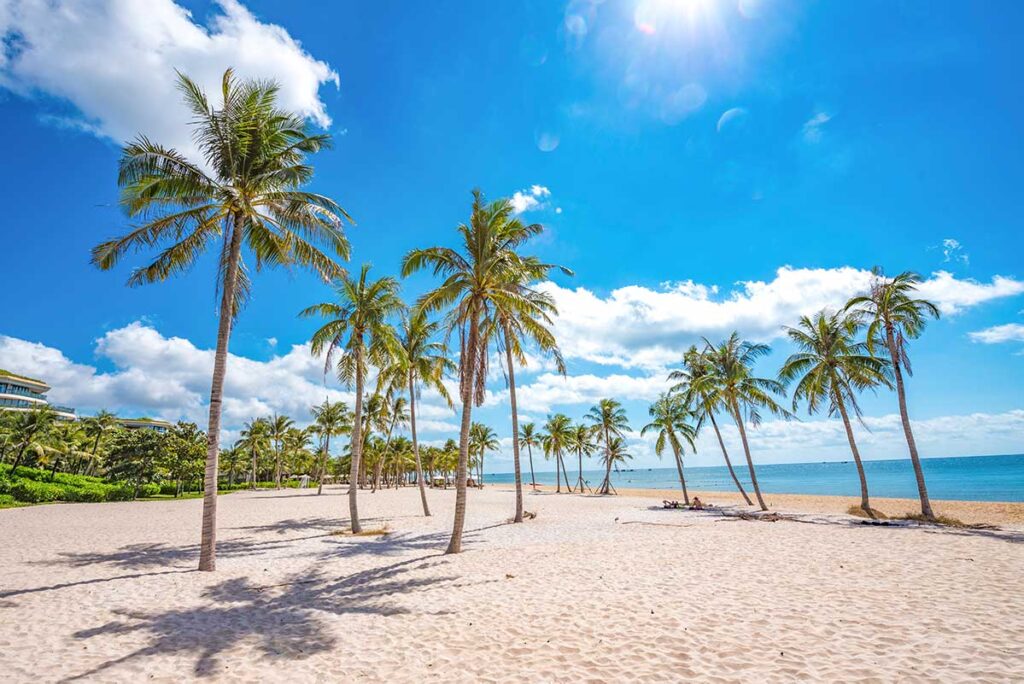
Phu Quoc is home to some of Vietnam’s best beaches, including Long Beach, Bai Sao, and Ong Lang Beach. Whether you’re looking for lively shores with amenities or secluded spots for relaxation, the island has something for everyone.
Diving
The waters around Phu Quoc are ideal for diving, with vibrant coral reefs and a variety of marine life. Diving tours cater to both beginners and experienced divers, making it a must-try activity for underwater enthusiasts.
Island boat trips & snorkeling

Explore the smaller islands surrounding Phu Quoc on a boat trip, stopping for snorkeling in crystal-clear waters. Highlights include Hon Thom, Hon Mong Tay, and the An Thoi Archipelago.
Discovering the inland
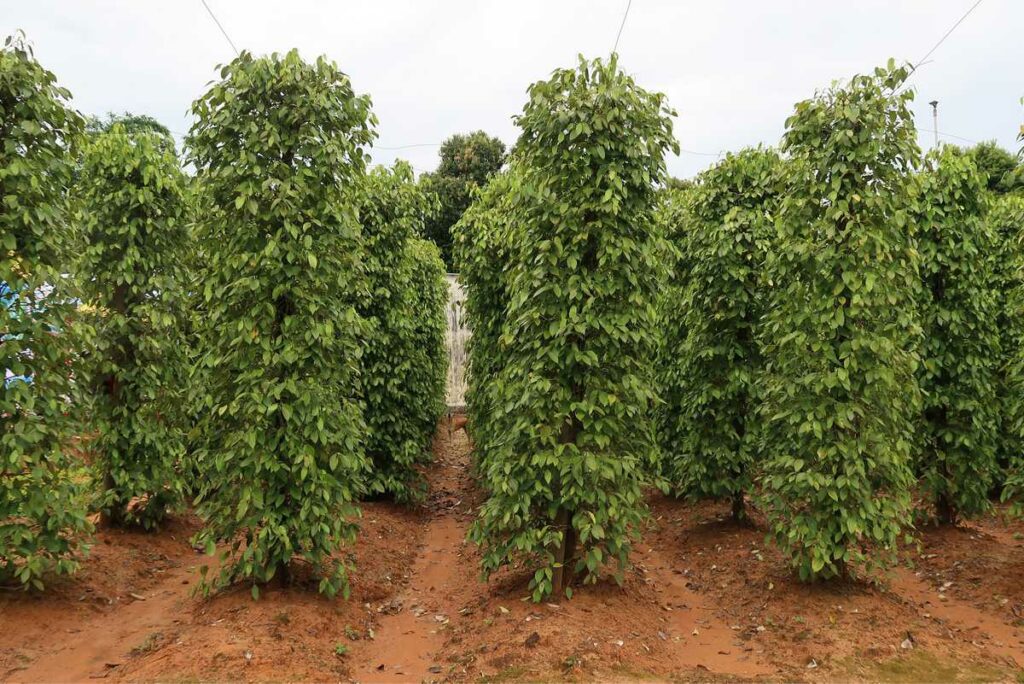
Phu Quoc’s inland areas offer plenty to discover, from the natural beauty of Suoi Tranh Waterfall and the dense National Park to cultural sites like the Coconut Prison and pepper plantations.
Attractions and theme parks
For family-friendly fun, Phu Quoc boasts several man-made attractions, including the Vinpearl Safari, a cable car to Hon Thom Island, and water parks with thrilling slides.
Night markets and fishing villages
Don’t miss the bustling night markets, such as Dinh Cau Night Market, where you can sample fresh seafood and shop for souvenirs. Ham Ninh Fishing Village is another highlight, offering a glimpse into traditional island life.
2. Ha Tien
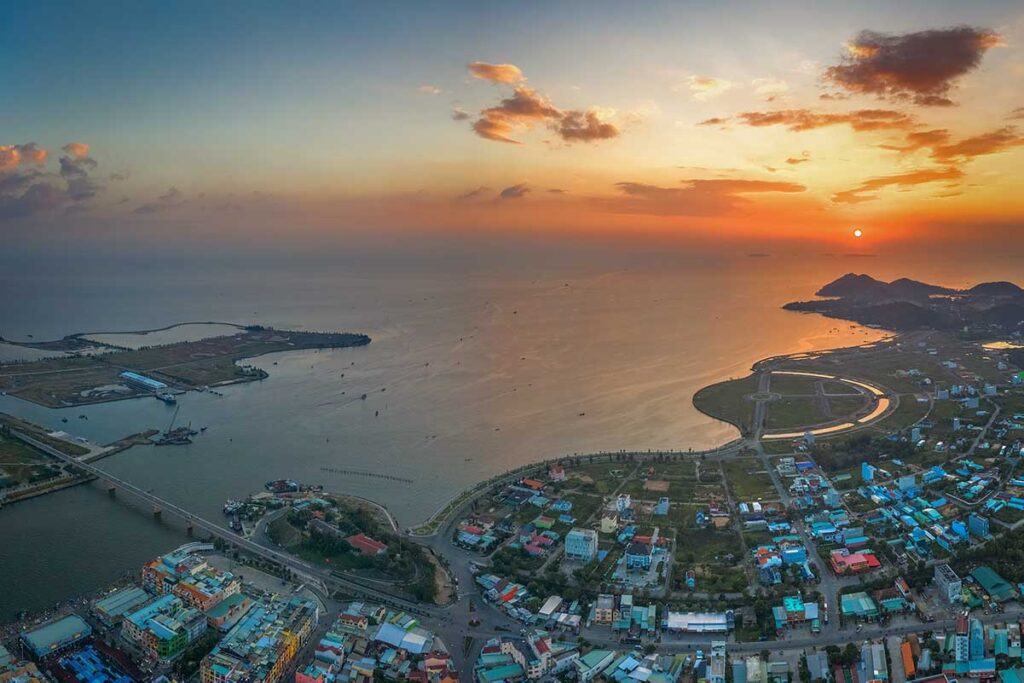
Ha Tien, located in the southwestern corner of Vietnam, is known for its coastal charm, local markets, and fresh seafood. While the town itself is more of a gateway to nearby islands and Cambodia, it has its own appeal for travelers seeking a quieter, authentic experience. Learn more about Ha Tien.
Beaches of Ha Tien
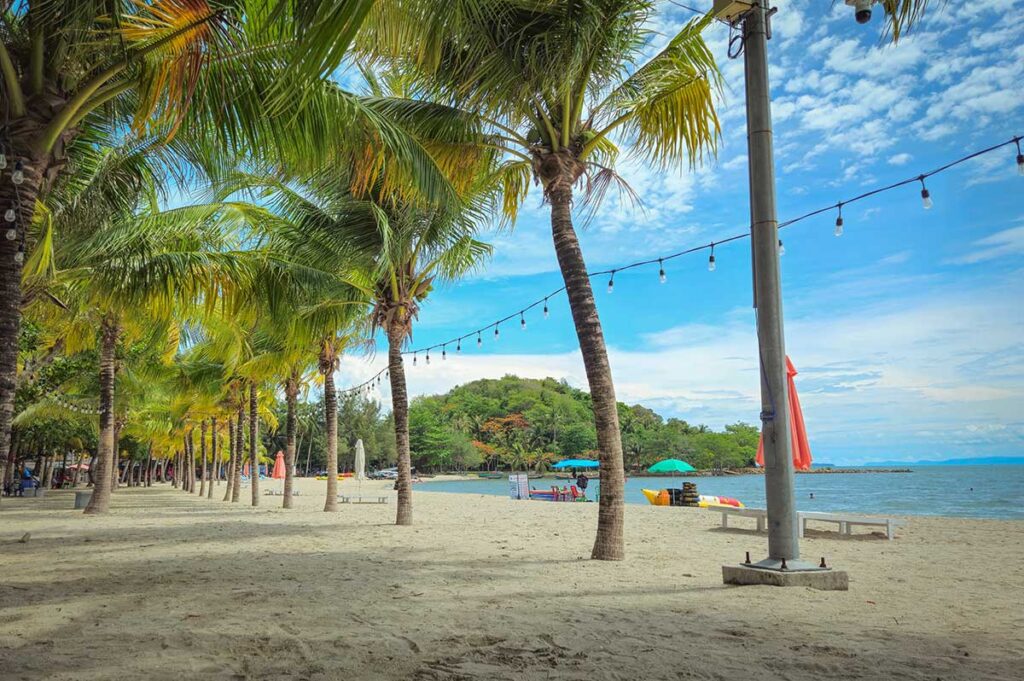
Although not a typical beach destination, Ha Tien has a few tranquil spots like Bai No Beach and Mui Nai Beach, ideal for a day of relaxation.
Religious sites
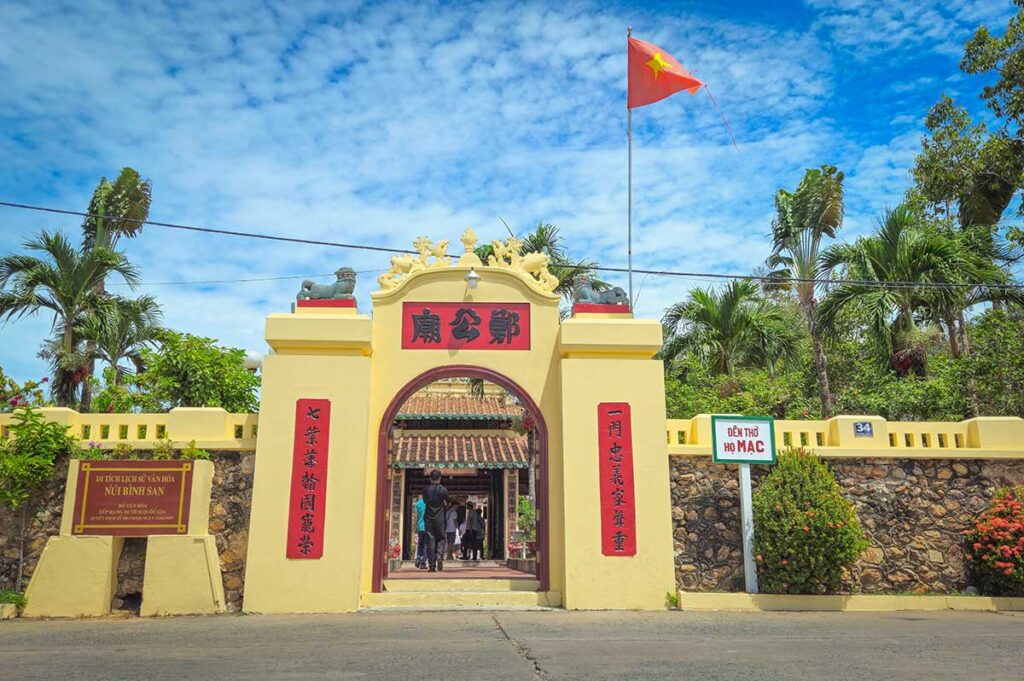
Ha Tien is home to unique religious sites such as Thach Dong Temple, nestled in a limestone cave, and Ngoc Tien Monastery, which overlooks Dong Ho Lagoon.
3. Ha Tien Islands
The Ha Tien Islands are a cluster of picturesque isles just off the coast of Ha Tien. Known for their serene landscapes and untouched charm, these islands are perfect for travelers seeking tranquility and natural beauty. The area is also a haven for snorkeling and exploring small fishing communities.
Hai Tac Island (Pirate Island)

Hai Tac Island, or Pirate Island, is the largest and only inhabited island in the Ha Tien archipelago. Despite its intriguing name, the island is a peaceful escape with basic accommodations and a small population. Visitors can enjoy the simplicity of island life, explore the pristine beaches, and learn about its historical ties to pirate activity in the region.
4. Ba Lua Islands
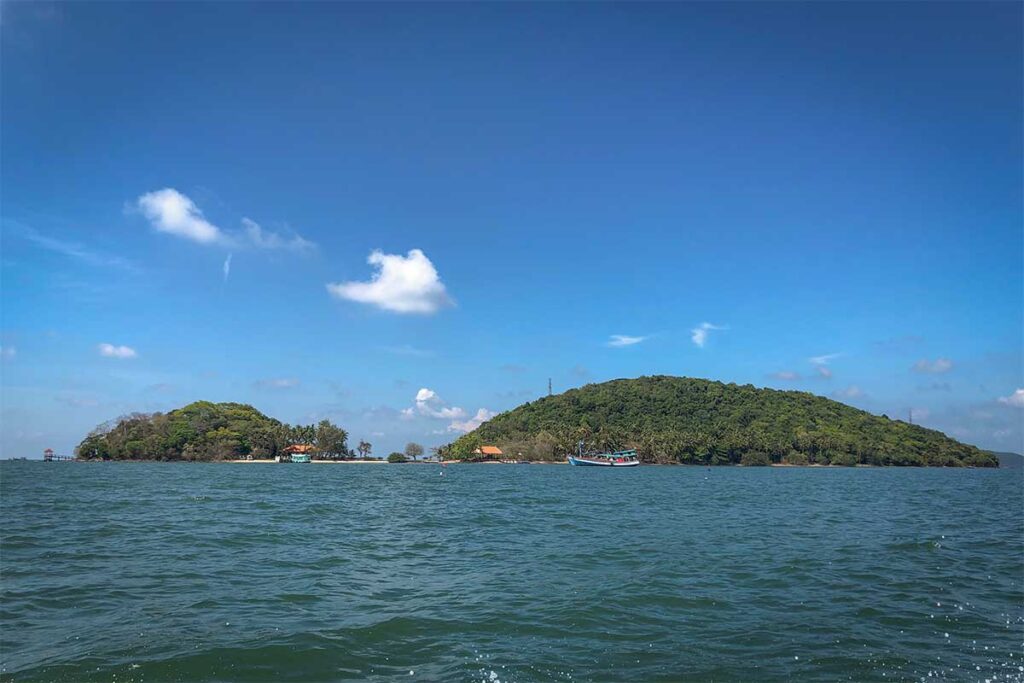
Located in Kien Luong District, the Ba Lua Islands are a collection of over 40 small islands, often referred to as the “Ha Long Bay of the South.” Known for their stunning karst formations and calm waters, these islands are a hidden gem in Kien Giang. Some islands are accessible by boat, and during low tide, you can even walk between a few of them. This off-the-beaten-path destination offers opportunities for camping, swimming, and admiring the unique coastal scenery.
5. Rach Gia
Rach Gia, the capital of Kien Giang Province, is a riverside city known for its local charm and bustling piers. While it lacks notable beaches, visitors can enjoy its vibrant street life, traditional markets, and scenic riverfront walks.
Temples & pagodas
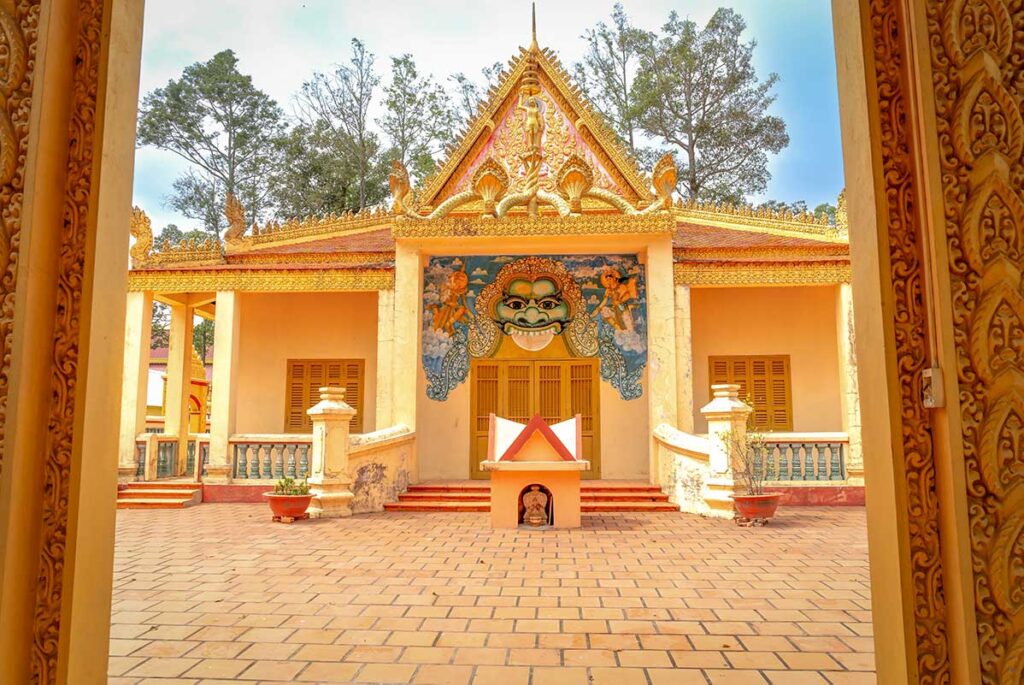
- Phat Lon Pagoda: A peaceful temple that provides a glimpse into the region’s spiritual traditions.
- Nguyen Trung Truc Temple: A revered site dedicated to a national hero, offering insight into Vietnamese history and culture.
Kien Giang Museum
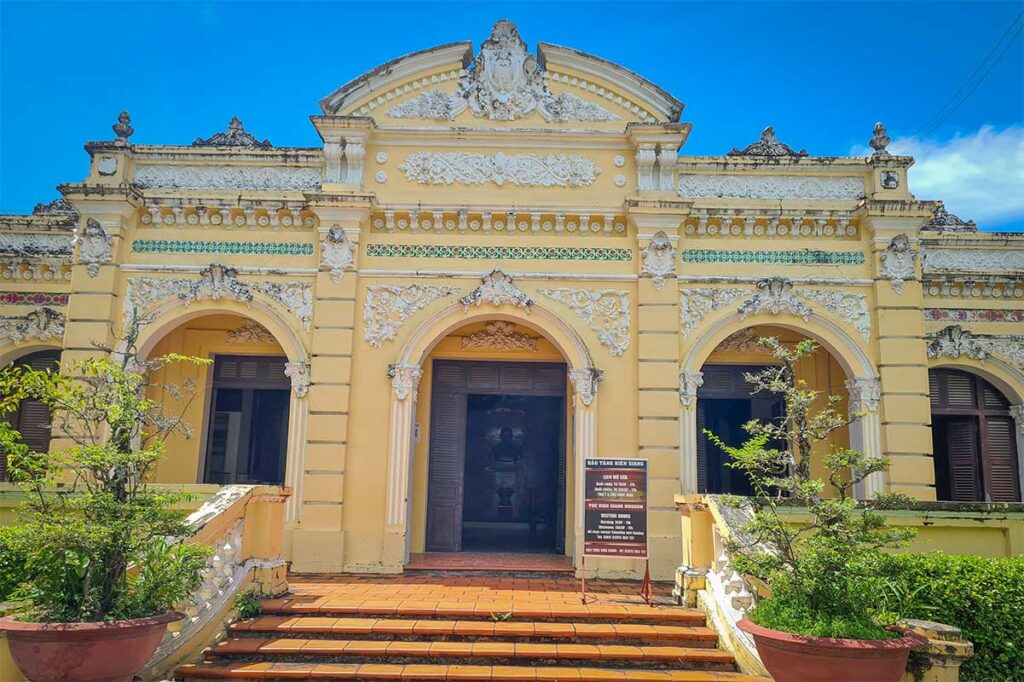
The Kien Giang Museum showcases the province’s rich history and culture. Exhibits include artifacts from the Khmer era, displays on local traditions, and insights into the area’s development. It’s a worthwhile stop for those interested in learning more about the region.
6. Nam Du Islands

The Nam Du Islands are among Vietnam’s most idyllic and beautiful archipelagos, boasting crystal-clear waters, palm-fringed beaches, and rugged landscapes. This hidden gem is perfect for adventurous travelers seeking untouched natural beauty. However, reaching the Nam Du Islands can be challenging due to limited ferry connections and their remote location. The effort is rewarded with stunning vistas, peaceful beaches, and a glimpse into the lives of local fishing communities.
7. Other Remote Islands
Kien Giang is home to many remote islands, each with its own unique charm and character. While some are accessible for adventurous travelers, others remain uninhabited or restricted, offering pristine landscapes rarely touched by tourism.
Hon Son

Hon Son, also known as Lai Son Island, is a picturesque destination known for its unspoiled beaches, lush forests, and charming fishing villages. The island is popular among locals but still sees relatively few international visitors. Highlights include hiking trails through the jungle, exploring the local seafood markets, and relaxing on sandy beaches like Bai Bang and Bai Nha.
Hon Tre
Hon Tre, or Bamboo Island, is a small, lesser-known island with tranquil beaches and a slow-paced lifestyle. Perfect for a day trip or a quiet retreat, Hon Tre offers opportunities to connect with nature and enjoy the simple pleasures of island life. The island is also known for its fresh seafood, making it a great stop for food lovers.
8. U Minh Thuong National Park

U Minh Thuong National Park is a unique wetland ecosystem located in Kien Giang Province. Renowned for its biodiversity, the park is home to rare bird species, reptiles, and mammals. Visitors can explore its tranquil canals by boat, trek through mangrove forests, and enjoy bird-watching opportunities. As one of the most important protected areas in the Mekong Delta, the park offers a deeper connection to Vietnam’s natural beauty.
9. Rural areas of Kien Giang
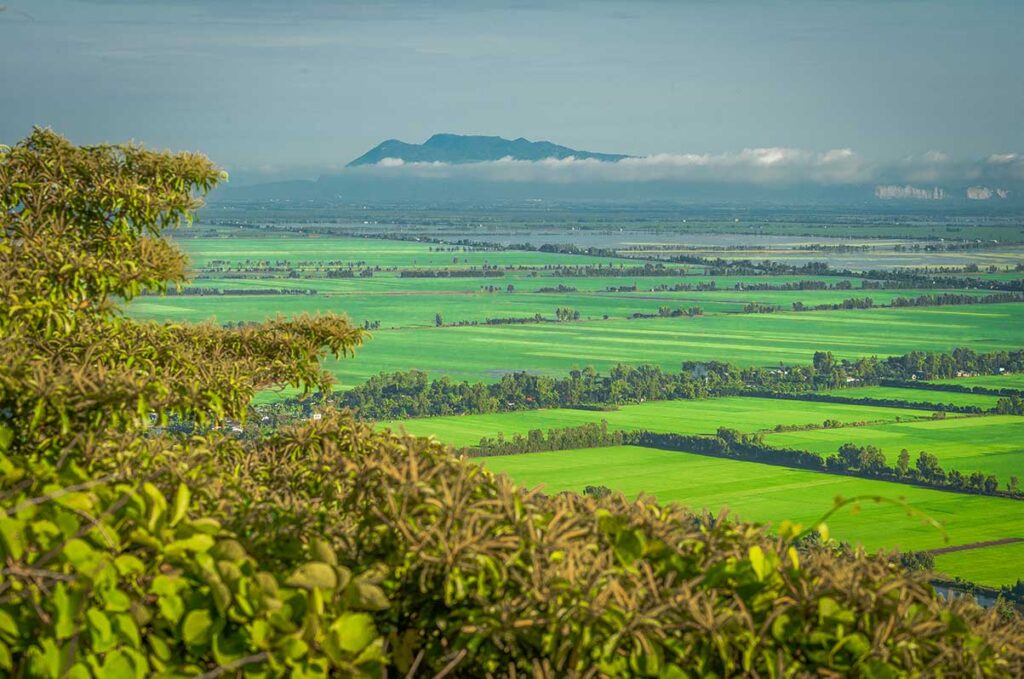
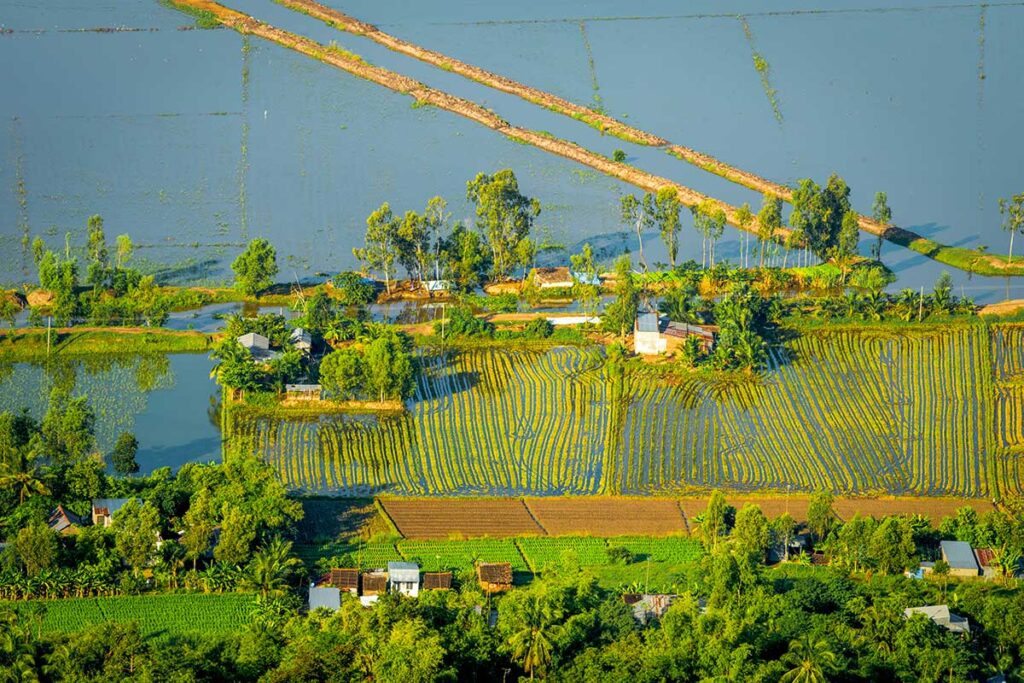
Unlike other Mekong Delta provinces, the mainland of Kien Giang lacks the iconic attractions like floating markets or sampan rides through submerged forests. The Mekong River and its branches do not flow through this area, but the countryside is still vast and serene. Featuring expansive rice fields and fruit plantations, the rural areas of Kien Giang are ideal for travelers who enjoy driving or cycling through peaceful landscapes. While it doesn’t offer major sights, the quiet charm of the countryside makes it worth considering for a leisurely day trip or an off-the-beaten-path exploration.
